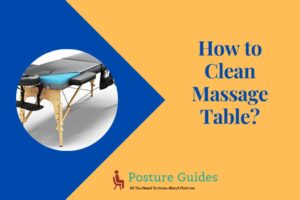Balance training is considered an inevitable part of fitness at any age. Along with promoting core strength and improving overall balance, balance training immensely helps develop overall wellness.
Balance training is fun with the right balance boards. People worldwide depend on quality balance boards for a highly flexible yet fun workout. Despite the age or gender, balance boards are something that anybody and everybody can engage in.
But, great attention is necessary when choosing and using balance boards for seniors. Seniors must pay much attention to the safety precautions to avoid unforeseen falls or injuries.
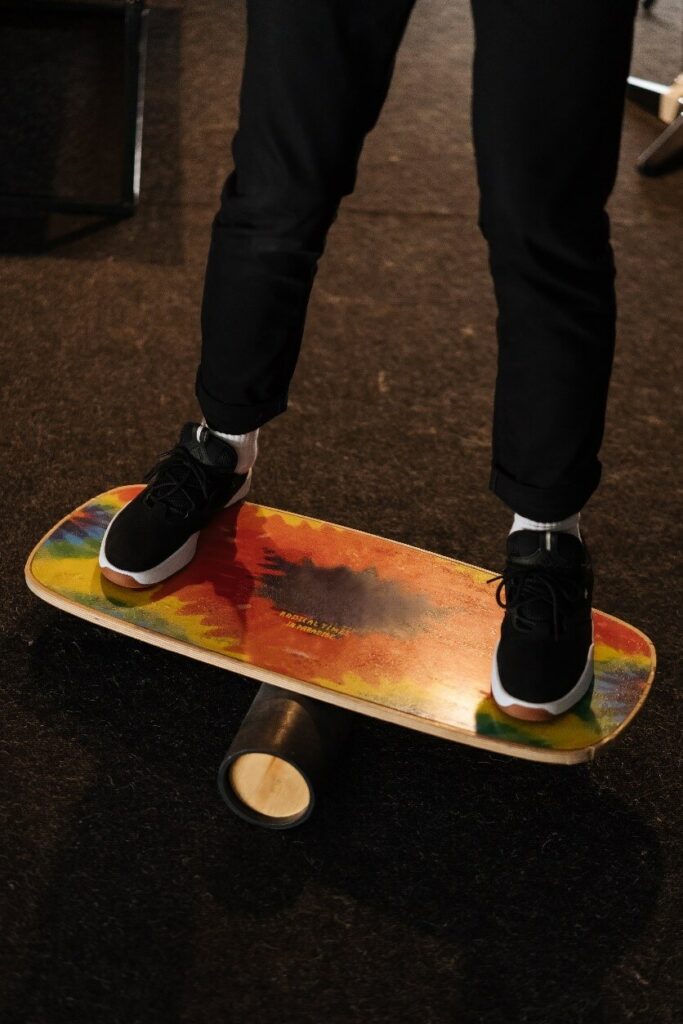
Contents
- 1 Balance Boards
- 2 Balance Boards: Benefits
- 3 Balance Boards: Different Types
- 4 Balance Boards: Things to Know Before Starting
- 5 How to Balance on a Balance Board?
- 6 How to Balance on a Balance Board for Seniors?
- 7 Balance Board for Seniors: Benefits
- 8 Balance Board for Seniors: Buying Guide
- 9 Summary
- 10 FAQs
Balance Boards
Balance boards are extremely popular fitness tools that come as a flat plank on an unstable surface. Manufacturers usually use wood to build balance boards. Balance boards can be dome-shaped or not. A wide variety of products are available under balance boards, which differ in shape and size.
The plank of the balance board is not stable at all. This unstable nature occurs due to the fixation of the plank’s bottom to a moving or uneven surface. Due to the lack of stability, the balance board constantly moves back and forth depending on the user’s weight.
Although most balance boards only facilitate a back-and-forth movement, there is a type of balance board called wobble boards that enable circular motion.
The benefits associated with balance boards are incomparable. The most apparent and highlighting use of training on a balance board is improving the balance and total coordination of the user’s body.
Balance Boards: Benefits
Some of the most noted benefits of using a balance board regularly are as follows.
1. Improves Body Balance
As mentioned before, improving body balance is the most apparent advantage of using a balance board. A 2019 clinical study has observed that a balance board is highly effective in regaining body balance for people who have suffered a stroke.
A balance board can significantly improve your general body balance, even if you are not ailing patient. Children practicing on a balance board from a young age exhibit great potential in sports like skateboarding, soccer, etc.
2. Reduces Injuries
A lot of minor accidents and injuries happen due to poor body coordination. People often get clumsy and lose their balance and fall to have injuries. A person practicing on a balance board for a significant amount of time will have better coordination and avoid most falls and resultant injuries.
Also, balance boards help the users strengthen their ankles, calves, and other leg parts. So, these parts won’t suffer sprains, instabilities, injuries, etc., so quickly.
3. Improves General Fitness
A balance board is not just beneficial for the lower body parts. It provides complete fitness to the user. A balance board can be used to tone the body or even muscle building. A number of flexible exercises are possible using a balance board.
A 2018 study shares insights on the fact that a balance board is a great option to spend a good number of calories without compromising on the user’s productivity.
Some other general benefits of using a balance board are as follows.
- Improves coordination of the user’s body.
- The motor skills of a balance board user will be consistently high.
- Balance board training strengthens the leg muscles of the users and prevents them from getting injuries.
- A balance board is an excellent tool for effective injury rehabilitation.
- Balance boards help with posture correction of the user.
Balance Boards: Different Types
Balance boards are basically available in three different models. They are as follows.
- Rocker Board
- Roller Board
- Wobble Board
Let’s take a detailed look at each of them.
Rocker Board
- Beginner-friendly
- Flat board with a semicircle base
- The board is rectangular in shape.
Roller Board
- The relatively most challenging balance board is the roller board.
- Flat shape
- The base of the board is a separate cylinder.
- The cylinder at the bottom is highly unstable and makes every movement of the user challenging.
- A rollerboard looks very similar to a skateboard.
Wobble Board
- Flat Board
- Round shape
- The board forms a perfect circle.
- The bottom of the board is dome-shaped.
The board and bottom are attached and, thus, are reasonably stable.
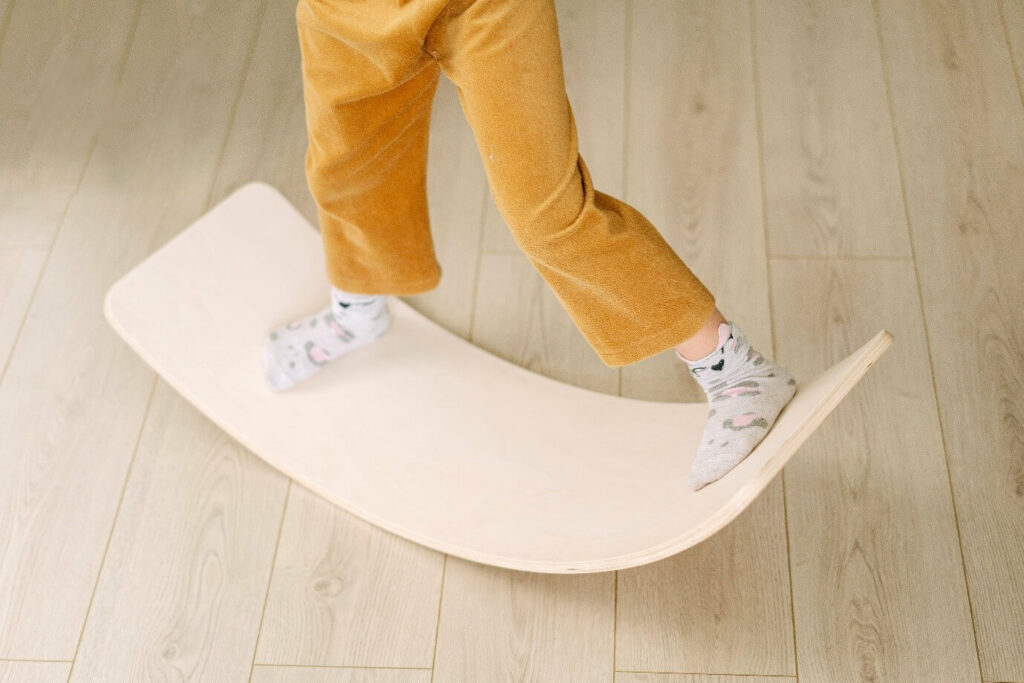
Balance Boards: Things to Know Before Starting
As a balance board is designed to be unstable, it is crucial for people using them to take some precautions beforehand. The significant things to know and remember before using a balance board are as follows.
1. Choose the right surface
It is essential to choose the right surface to use a balance board to avoid accidents and injuries. You should always pick a hard surface that is smooth enough. You can also use a balance board on a carpeted surface.
It is essential not to use balance boards on rough surfaces. Rough surfaces do not support the smooth back-and-forth motion of balance boards and can cause the user to lose balance and fall.
You should also clear the premises where you are using the balance board. Otherwise, chances are there for you to get hurt if and when you lose balance on the board.
2. Always use safety gear
Safety gear is a must for when using a balance board. Helmet, elbow pads, knee pads, etc., are the most essential safety gear that you need during balance training on an unstable balance board.
3. Try to keep a companion
It is advisable to have a spotter or companion by your side when you are using a balance board. This is particularly applicable for beginners in balance training. Chances are high for both beginners and pros to lose balance and fall from the balance board.
Having a spotter or companion gives you enough confidence that even if you fall, there is someone to help you out.
4. Use a support structure
A strong support structure like a wall or railing is always ideal for beginners in balance training. Having a solid structure to balance on helps a beginner balance trainer not fall often and gradually earn confidence and proper balance.
It would be best to keep your hands on the support structure and gently move back and forth until you feel convinced to do it independently.
How to Balance on a Balance Board?
Beginners need to know some essential tips and techniques to find better balance on a balance board. Here are some tips on balancing on a balance board, exclusively for beginners.
- It is essential for the user to look forward while using a balance board. Many people commit a mistake by looking down at the board. This will only make them lose balance.
- While standing on a balance board, it is essential for the user to stand pretty straight. The knees should be bent, and the head should be held high. You should also keep your back straight while using a balance board.
- You should always keep your eyes focused on a fixed point before you while using a balance board. Focussing your eyes and mind on a point helps you calm down and concentrate better on the balancing process.
- While using a balancing board, you should not slouch too much down. You should only bend your knees slightly. Bending the knees too much or bending your shoulders forward is not ideal.
- Depending on the purpose of your balance board training, you may or may not use shoes. If you are practicing skateboarding, it is ideal to use a good pair of sports shoes on the balance board. If you are training for surfing, you can try balancing on the board barefoot.
Once the user can comfortably balance on a balance board, they can use it for exercises. Balance board exercises are great for strengthening the core and toning the whole body.
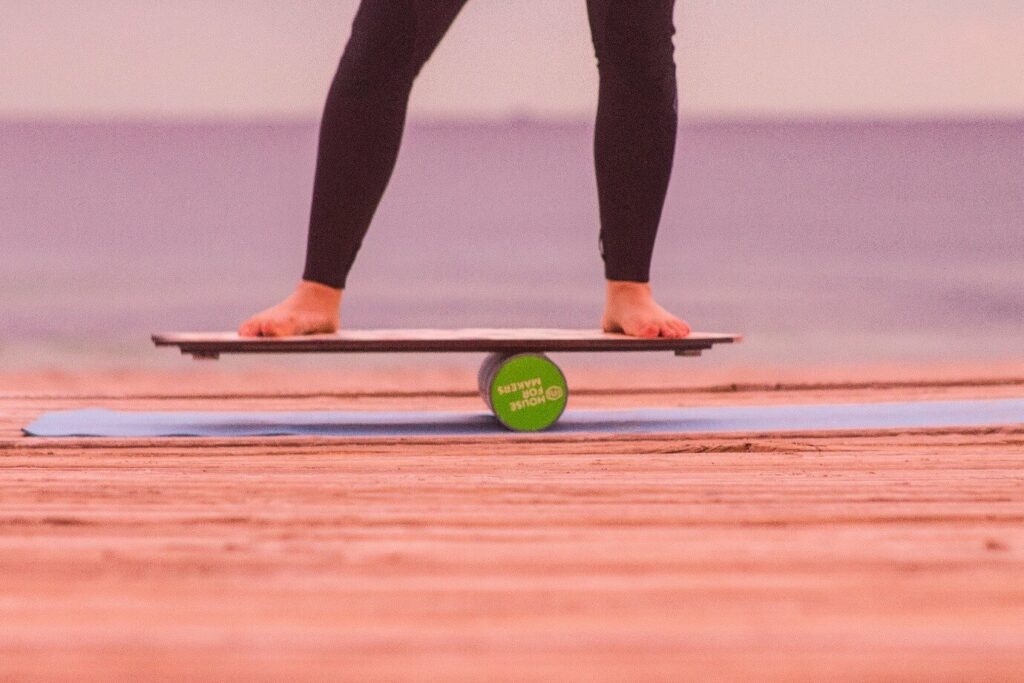
How to Balance on a Balance Board for Seniors?
Age inclusivity is a highlight feature of balance boards. A vast number of senior citizens worldwide enjoy training on balance boards. Balance boards are a great way to include some kind of movement and flexibility into the daily routines of seniors.
However, it is vital for seniors to take the necessary precautions to avoid unnecessary injuries and falls. Some practical tips and techniques that the seniors can use while using and balancing on a balance board are as follows.
- Seniors should consult with their physician before starting balance board training.
- Rather than starting on their own, seniors should avail of the service of a physiotherapist to ease into balance board training.
- Seniors with a history of constant falling or balance issues should refrain from using a balance board.
- Sturdy shoes are a must for seniors who are beginners in balance board training.
- When seniors start using balance boards, it is advisable to use them near a sturdy grab bar or railing so that getting on and off the board can be much more convenient.
- Seniors should understand the fact that balance training can be highly tiring. So, they should be prepared to stop the activity as soon as they start feeling exhausted.
- A senior who needs glasses or lenses for proper eyesight should make sure to wear them while practicing on a balance board.
- Seniors should make sure to take their good time to proceed with the balance board practice. They might be unable to proceed with the training as fast as younger trainees, which is extremely fine.
- A senior on balance training should not use a balance board immediately after having medications that can impact the vision or blood pressure levels of the user.
- Seniors should never forget to wear their medical alert devices while using a balance board.
- Even if a senior has managed to gain much experience with balance training, it is advisable always to keep a spotter or companion by their side while using balance boards.
- If seniors cannot find their groove on balance boards and find it challenging to balance on a board, it is advisable for them to go back to sitting balance training for a while. Once they become comfortable with the sitting balancing activity, they can be reintroduced to the balance boards.
Seniors can use balance board mats, and stabilizer rings to balance on a balance board effectively. Stabilizer rings will keep the board in one place and prevent it from sliding off. Balance board mats are smooth surfaces where the board can perform and balance well.
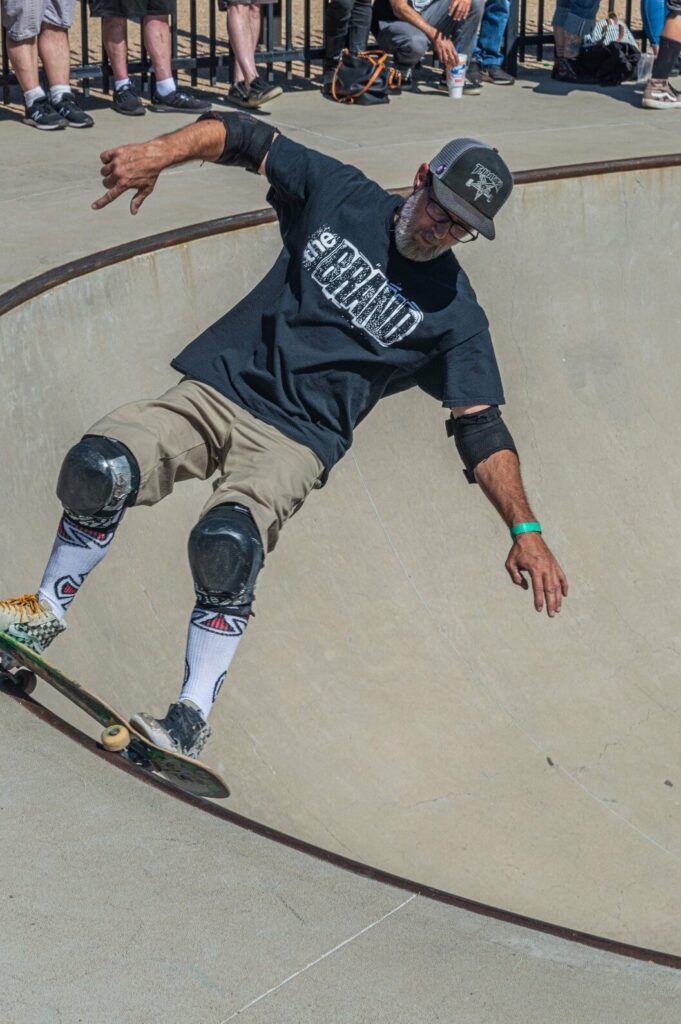
Balance Board for Seniors: Benefits
Balance training comes with immense benefits for seniors. Usually, when a person ages, their vision, coordination, muscle strength, etc., becomes compromised. This can often lead to unexpected falls, stumbles, and injuries.
Falls are the leading reason for injury in seniors. With the right tools, like balance boards and regular balance training, seniors can significantly improve coordination and body balance.
Some of the best benefits of a balance board for seniors are as follows.
1. Enhances Stability in Seniors
The significant advantage of a balance board for seniors is that it improves body stability significantly. It provides seniors a chance to practice balancing on an unstable surface. This enables them to be better coordinated on both stable and uneven surfaces.
So, once the balance training is over, the seniors can experience improved coordination and significantly reduced accidental falls.
2. Promotes Active Aging
Active aging is a concept that believes that seniors should be physically engaging and active despite their age or health status. This philosophy encourages seniors to regain and maintain their fitness.
A balance board is a classic tool for active aging. Balance boards can be used as per the requirement of the user. This flexible nature enables seniors to put the balance board to use, like exercising, and thereby remain active.
3. Improves Core Strength
Balance boards provide a complete workout for the user’s body, especially for seniors. It betters the core strength and corrects the posture. With the improvement in core strength, seniors can easily engage in day-to-day activities like climbing stairs, walking, etc.
4. Improves Cognitive Capabilities
A significant part of the senior population struggles with cognitive impairments. Memory loss is a common occurrence in seniors. Practicing balance training with the help of a balance board helps the seniors significantly improve their cognitive abilities and skills.
Senior users can sharpen their concentration, focus, coordination, mental agility, etc., with the regular use of balance boards. Some clinical studies also point out that balance board training in seniors can improve their spatial cognition and memory.
Balance Board for Seniors: Buying Guide
Unlike for youngsters, purchasing a balance board for seniors needs to be a highly attentive task. As a balance board involves an unstable surface and seniors are vulnerable to accidental falls, choosing the right board is crucial.
Here are some pointers to help you choose the right balance board for seniors.
1. Safety Features are Important
- Safety features are the first and foremost factor to consider while purchasing a balance board for a senior.
- The balance boards should have a surface that is not slippery to ensure the safety of beginner seniors.
- Safety features of balance board for seniors should include stabilizer rings, balance board mats, etc.
2. Easy Usage Should be Possible
- Seniors, both experts, and beginners in balance training, should find it easy to use a balance board to be ideal.
- It is advisable for seniors to choose a balance board with clear and understandable instructions.
- A balance board with a simple design would be the best for a senior.
- Expert seniors can use adjustable balance boards to make things more challenging. Adjustable balance boards provide the user with an option to adjust the difficulty level of the board.
3. High Durability is a Must
- An ideal balance board, may it be for seniors or not, should be durable enough to last a pretty long time.
- A balance board should be able to resist wear and tear that can be from the repeated or daily usage of the balancing board.
- It is advisable always to get a high-quality wooden balance board to ensure longevity and durability.
4. Affordable Pricing
- Balance boards are available in multiple sizes and types. Depending on the type of board, the price can vary much.
- It is advisable for beginner seniors not to spend an unreasonable amount of money on a balance board that can be damaged after several falls.
- A senior should remember that just because a balance board is high in price, it does not validate the quality of the product.
It is always preferable to go online and check the reviews before spending too much money on a balance board.
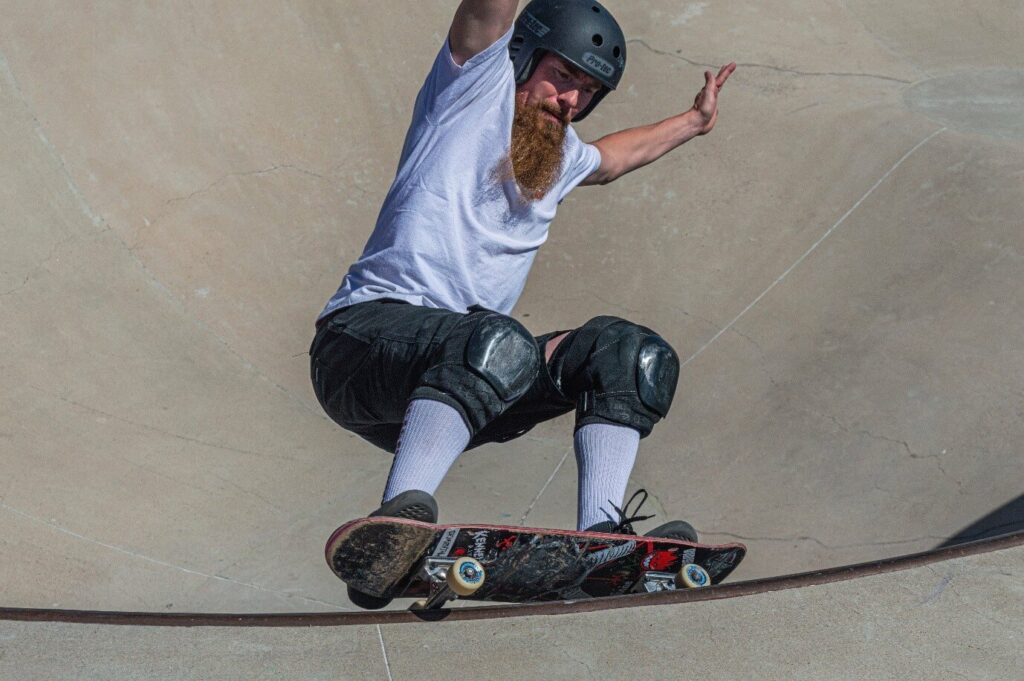
Summary
Being a sixty-six-year-old, I have been looking for safe exercise equipment for a while. My physiotherapist suggested balance training to me at the beginning of the search. But I was skeptical about it and was afraid that I might fall from it. But I decided to give it a chance anyway and bought a beginner-friendly, lightweight balance board. It came with clear instructions on using it to achieve better body balance and coordination. I have experienced significant improvement in my body balance, cognitive skills, coordination, etc.
FAQs
1. How long should I balance on a balance board?
You can balance for as long as possible on a balance board. Balancing on the board for more time indicates better coordination and cognitive skills of the user. Beginners can aim to balance the board for at least two minutes continuously.
2. Are balance boards good for seniors?
Balance boards are good for seniors. They help increase the total fitness and core strength of the user. They are instrumental in improving the body balance, coordination, and cognitive skills of seniors.
3. How can I regain my balance after 60?
You can regain your balance after 60 by following simple yet highly effective exercises. You can also use a lightweight balance board to improve your body balance gradually.
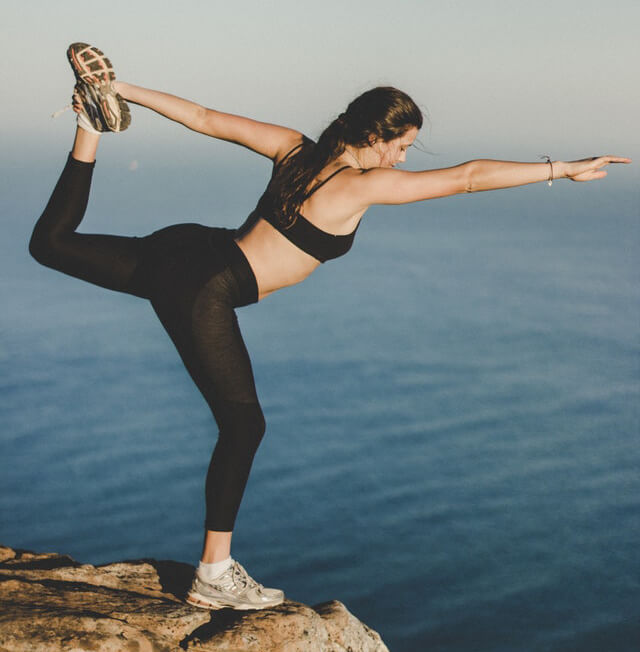
Hi, I am Valerie. I love working out and trying out various products which help me maintain my fitness. I love reviewing products related to posture and pain relief that will help people in some way. I like to spend my extra time swimming, Running and Wall Climbing. I am a physiotherapist and have helped countless people lead a pain free life.



